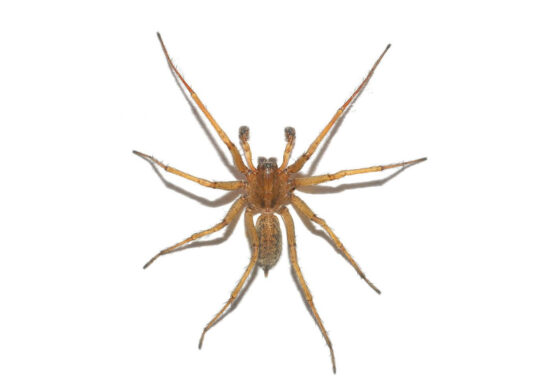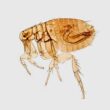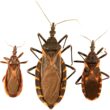Finding hobo spiders in your home can be pretty unsettling. These brown, fast-moving spiders are common in the Pacific Northwest and often get mistaken for more dangerous species. While hobo spiders aren’t as scary as people once thought, most homeowners still want them gone from their living spaces.
The good news? Getting rid of hobo spiders is totally doable with the right approach. This guide will show you exactly how to get rid of hobo spiders using these effective methods that really work. From simple cleaning tricks to professional treatments, you’ll have plenty of options to choose from.
1. Figure Out If You Really Have Hobo Spiders
Before you start any treatment, you need to make sure you’re actually dealing with hobo spiders. These guys look pretty similar to other common house spiders, so it’s easy to mix them up.
Hobo spiders are medium-sized, usually about half an inch to two-thirds of an inch long. They’re light to medium brown and have a distinctive V-shaped pattern on their back that looks like chevrons pointing toward their head. Their legs are solid brown with no stripes or bands, which is a key way to tell them apart from other spiders.
Look for their funnel-shaped webs at ground level. These webs aren’t sticky like other spider webs. Instead, they’re flat with a tunnel-like opening where the spider hides. You’ll usually find these webs in cracks, corners, and crevices around your home.
People often confuse hobo spiders with giant house spiders, domestic house spiders, and wolf spiders. The main difference is that hobo spiders have those solid-colored legs and specific chevron markings. If you’re not sure what you’re dealing with, it might be worth having a pest control expert take a look.
Hobo spiders are most active from early August through early October. You’re most likely to spot them indoors from mid-July until the first frost hits.
2. Clean Up and Remove Clutter
One of the easiest ways to start getting rid of hobo spiders is by cleaning up your home. These spiders love cluttered, undisturbed areas where they can hide and build their webs without being bothered.
Start with your storage spaces like closets, garages, basements, and attics. Get rid of anything you don’t really need, especially piles of cardboard boxes, old papers, and recyclables. These materials make perfect hiding spots for spiders.
Pay special attention to areas behind furniture and along baseboards. Vacuum these spots regularly and keep them clear of clutter. In basements and ground-level rooms, try to keep belongings off the floor as much as possible.
Set up a regular cleaning schedule that includes weekly vacuuming of spider-prone areas. This simple step removes existing spiders and makes your home less appealing to new ones. The cleaner and less cluttered your home is, the fewer places spiders have to hide.
Don’t forget about outdoor clutter either. Keep areas around your home’s foundation clear of debris, woodpiles, and dense vegetation that can harbor spiders.
3. Seal Up Entry Points and Cracks
Hobo spiders get into your home through surprisingly small openings. Sealing these entry points is one of the most effective long-term solutions for keeping them out.
Walk around your home and look for cracks and gaps in the foundation, around windows, and near doorways. Use a good quality caulk to fill these openings. For larger gaps that caulk can’t handle, try copper mesh or steel wool.
Don’t forget about the spaces where pipes and utilities enter your house. These are common entry points that people often overlook. Seal them up with appropriate materials.
Check your window and door screens for tears or holes. Replace damaged screens and add door sweeps to close gaps under doors. Weather stripping around windows and doors also helps keep spiders out.
This method works so well because hobo spiders are poor climbers on smooth surfaces. Once you block their ground-level entry points, they have a much harder time getting inside. The time you spend sealing up your home now will save you from dealing with spider problems later.
4. Get Rid of Their Food Sources
Hobo spiders come into homes mainly because there’s food available. They eat other insects like ants, flies, earwigs, and cockroaches. If you can eliminate these prey insects, the spiders will have less reason to stick around.
Take care of any other pest problems you might have. Use appropriate treatments for ants, flies, and other insects that spiders like to eat. Getting rid of hobo spiders becomes much easier when there’s nothing for them to hunt.
Fix any moisture problems in your home too. Leaky pipes, air conditioning issues, and standing water all attract the insects that spiders feed on. Dry out your sinks every night and address any plumbing problems promptly.
Keep your landscaping from touching your home’s foundation. Plants against the house create highways for insects to travel, and spiders follow their food source. Maintain a clear zone around your foundation to reduce insect access.
This approach works because it addresses the root cause of why spiders are in your home in the first place. No food equals no reason for spiders to stay.
5. Use Your Vacuum for Quick Removal
Your vacuum cleaner is one of the best tools for how to get rid of hobo spiders quickly and safely. These spiders can’t survive the suction force, so vacuuming kills them almost instantly.
Focus on floor-level areas where hobo spiders like to hang out. Vacuum along baseboards, in corners, behind furniture, and in closet areas. Don’t forget about garage corners and basement spaces where spiders commonly build webs.
When you find spider webs, vacuum them up completely along with any egg sacs you might see. Make sure to get into all the crevices and tight spaces where spiders like to hide.
After vacuuming, empty the contents into a sealed plastic bag and throw it away in your outdoor trash. This prevents any surviving spiders or unhatched eggs from getting back into your home.
For individual spiders you spot running around, you can also squish them with a paper towel or shoe. If you prefer a more humane approach, use a glass and piece of paper to capture them and release them outside.
Make vacuuming spider-prone areas part of your weekly cleaning routine. Regular removal prevents spiders from establishing themselves in your home.
6. Set Up Sticky Traps in Key Areas
Sticky traps are incredibly effective for catching hobo spiders as they move around your home. These traps work especially well because hobo spiders spend a lot of time traveling along walls and baseboards.
Place glue boards flat against walls in corners and along baseboards where you’ve seen spider activity. Focus on dark, quiet areas like closets and basements where spiders feel most comfortable.
The traps should lay completely flat against the wall with no gaps where spiders might slip under. You can get good coverage by placing traps every few feet along problem areas.
Keep the traps away from children and pets. If someone accidentally gets stuck to one, you can use cooking oil to dissolve the adhesive safely.
Check your traps regularly and replace them when they get full or dusty. The traps not only catch spiders but also help you figure out where the heaviest spider activity is happening in your home.
Sticky traps work great alongside other methods. While you’re working on prevention and elimination, the traps catch any spiders that are still moving around.
7. Try Natural Repellents and Essential Oils
If you prefer natural methods for getting rid of hobo spiders, essential oils can be quite effective. Spiders really don’t like strong scents, especially peppermint oil.
Mix about 20 drops of peppermint essential oil into a 32-ounce spray bottle filled with water. Spray this mixture around entry points, window frames, door frames, and other areas where you’ve seen spider activity.
Other oils that work well include lavender, thyme, citronella, and mint. You can use these the same way as peppermint oil or even combine different scents.
Another natural option is a simple vinegar spray. Mix equal parts white vinegar and water in a spray bottle and apply it to spider-prone areas. The strong smell keeps spiders away from treated spots.
You can also soak cotton balls in essential oils and stuff them into crevices and small openings where spiders might enter. This method works well for areas you can’t easily spray.
Reapply these natural treatments weekly or after cleaning to keep them effective. While they might not kill existing spiders, they do a good job of keeping new ones from moving in.
8. Apply Diatomaceous Earth as a Barrier
Diatomaceous earth is a natural powder that works really well against hobo spiders. This stuff is made from tiny fossilized sea creatures and is completely safe for humans and pets when you use the food-grade version.
The powder works by sticking to spiders’ bodies and damaging their outer shell. It also absorbs the oils from their skin, which causes them to dry out and die. It’s like tiny glass particles to a spider but feels like regular powder to you.
Sprinkle a thin layer of diatomaceous earth around entry points and in areas where spiders travel. Focus on cracks, crevices, and the spaces between cabinets where spiders like to hide.
Make sure the area stays dry for the powder to work. If it gets wet, you’ll need to clean it up and reapply fresh powder. Always wear gloves and a dust mask when applying it to avoid breathing in the particles.
This method takes time to work. Spiders might not die immediately after contact, but they’ll usually die within hours or days depending on how much they were exposed to.
The great thing about diatomaceous earth is that it keeps working as long as it stays dry and undisturbed. It’s a long-term solution that doesn’t involve harsh chemicals.
9. Use Professional Grade Insecticides
Sometimes you need stronger methods for how to get rid of hobo spiders, especially if you’re dealing with a larger infestation. Professional-grade insecticides can be very effective when applied correctly.
Products like Supreme IT Insecticide work well for indoor crack and crevice treatments. Apply these products along baseboards, around windows and doorways, and in other cracks where spiders hide.
Mix the insecticide according to label directions, usually about 0.33 to 1 ounce per gallon of water to cover 1,000 square feet. Use a spray bottle or pump sprayer for precise application.
For outdoor treatment, spray a barrier around your home’s perimeter. Go about 3 feet up the walls and 3 feet out from the foundation. This creates a protective zone that kills spiders before they can get inside.
Quality insecticides provide residual control for about 90 days, so you don’t have to reapply them constantly. Follow up with a fresh application every three months for continued protection.
Keep in mind that sprays are often less effective on spiders than on other insects because spiders’ long legs keep their bodies away from treated surfaces. Focus on areas where spiders actually walk and hide for best results.
10. Improve Your Outdoor Environment
Making your yard less attractive to hobo spiders is a key part of getting rid of hobo spiders for good. These spiders usually live outdoors and only come inside when they’re looking for food or mates.
Keep vegetation and debris away from your home’s foundation. Aim for at least an 18-inch clear zone around your house where grass and plants don’t touch the building. This eliminates the bridges that spiders use to get from your yard to your home.
Move firewood, lumber piles, and other materials away from your house and outbuildings. These materials make perfect hiding spots for spiders, and keeping them distant reduces the spider population near your home.
Clean up your yard regularly by raking leaves, picking up fallen branches, and removing other debris where spiders might hide. The less clutter you have outside, the fewer spiders you’ll have trying to get inside.
Consider changing your outdoor lighting to yellow bug lights or sodium vapor lamps. These types of lights attract fewer insects, which means less food for spiders in your yard.
If possible, plant native trees and shrubs that attract birds and other natural spider predators. A healthy ecosystem in your yard can help keep spider populations naturally controlled.
11. Use an Integrated Pest Management Approach
The most effective way of getting rid of hobo spiders is to combine several methods into one comprehensive plan. This approach, called Integrated Pest Management, gives you the best long-term results.
Start by regularly inspecting your home for signs of spider activity and new entry points. Use sticky traps to monitor spider populations and see which methods are working best.
Combine prevention methods like sealing entry points and reducing clutter with active removal techniques like vacuuming and trapping. This multi-layered approach attacks the problem from different angles.
Focus on making your environment less hospitable to spiders by reducing moisture levels and eliminating their food sources. Environmental changes often work better than just trying to kill spiders after they’re already in your home.
Keep track of what’s working and adjust your strategy as needed. If you’re still seeing lots of spiders after a few weeks, you might need to add more methods or call in professional help.
The integrated approach works because it addresses both current spider problems and prevents future infestations. You’re not just treating symptoms but actually solving the underlying issues that attract spiders to your home.
12. Call Professional Pest Control Services
Sometimes DIY methods aren’t enough, and that’s when it’s time to call in the professionals. If you’re still dealing with hobo spiders after trying multiple approaches, professional pest control can provide the expertise and tools you need.
Professional exterminators can accurately identify spider species and create customized treatment plans for your specific situation. They have access to more effective products and know exactly where and how to apply them safely.
A typical professional treatment starts with a thorough inspection and initial treatment, followed by a follow-up visit about 30 days later. Most companies guarantee about a 75% reduction in spider activity after the first treatment cycle.
Professional services also help with long-term prevention strategies. They can spot entry points and problem areas that you might miss and recommend specific improvements for your property.
The average cost for professional spider control is around $175, though prices vary depending on the size of your home and severity of the infestation. Many companies guarantee their work and will treat your home again if spiders return between scheduled visits.
Don’t wait too long to call professionals if DIY methods aren’t working. The sooner you address a serious spider problem, the easier and less expensive it is to solve.
Wrapping Up Your Spider Control Plan
Getting rid of hobo spiders doesn’t have to be overwhelming when you have the right plan. The most effective approach combines good housekeeping, exclusion methods, and targeted treatments to both eliminate current spiders and prevent new ones from moving in.
Remember that hobo spiders aren’t as dangerous as people once believed, but they can still be a real nuisance in your home. Focus on prevention and non-lethal removal methods first, then move up to stronger treatments if needed.
The key to success is using multiple methods together rather than relying on just one approach. Combine cleaning and sealing with trapping and natural repellents for the best results. And don’t hesitate to call professionals if you’re dealing with a persistent or large-scale problem.
With patience and the right techniques, you can get your home back to being spider-free and keep it that way.


